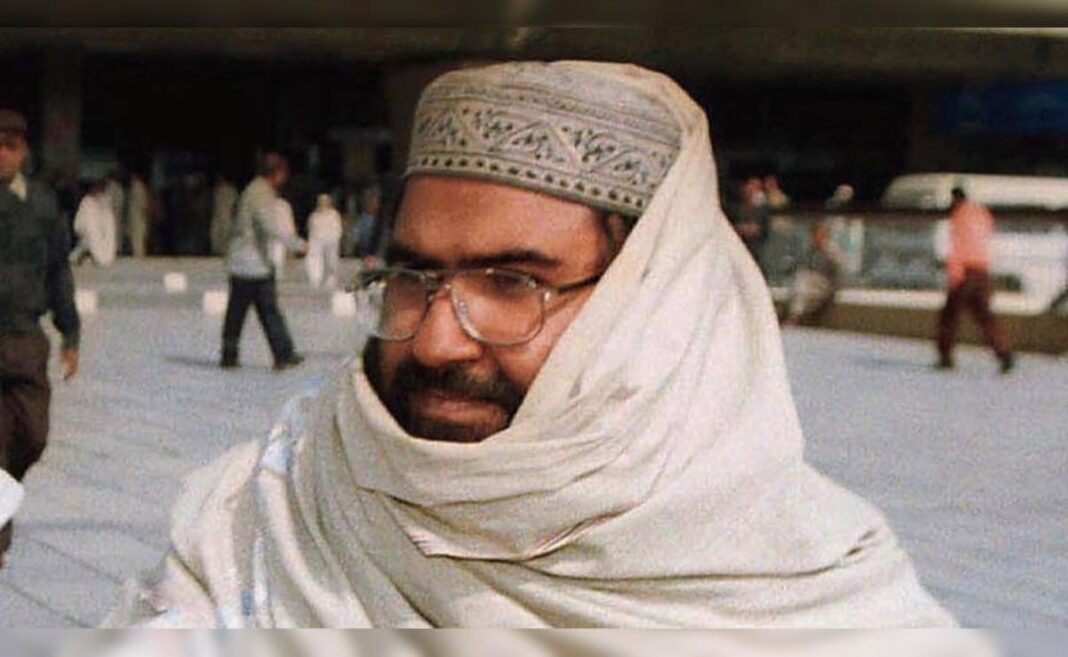[
]

(The following is an excerpt from the book ‘Inside the Terrifying World of Jaish-e-Mohammed’ by Abhinav Pandya. The book examines the JeM’s origins, ideology, organisational structure, financing, strategies, radicalisation methods and more.)
After his arrest, it took the authorities some time to ascertain Masood Azhar’s real identity for he was carrying a Portuguese passport. He was interrogated several times by the IB, R&AW and the J&K state police. Later, after five Western backpackers were kidnapped in Kashmir by Al Faran (a splinter group of the HuA) in a bid to release Masood, the FBI also interrogated him. In his interrogations, he displayed a mild and cooperative demeanour.

He gave the impression of a religious scholar and an intellectual. With his long experience in journalism, he was smooth in his interviews with the media too; however, he was not comfortable giving interviews to female journalists. He did not look into their eyes because it was deemed un-Islamic.
Chanchal Singh, the jail superintendent at Kot Bhalwal Jail at the time of Masood’s release, said that he was treated like an ordinary terrorist. He was kept in a different cell, separate from HM terrorist Mushtaq Zargar and another Jaish militant Omar Saed Sheikh, his aides, who were also released with him. However, some officers suggest he was addressed as ‘Azhar sahab’ in the jail. Mostly, the jail staff say, he prayed in his cell and distributed small amulets (taweez) to jail inmates. Sometimes, visitors came to him for spiritual healing – looking for relief from their medical and family issues. It is believed that Masood began sermonising in jail and radicalised some of his fellow inmates.
When Masood Feigned Ignorance About Another Terrorist
Avinash Mohananey, a former Intelligence Bureau (IB) official who interrogated Masood, revealed that his initial confessions were about how Deobandi clerics inspired him. He said that Masood was very communicative and forthcoming in sharing knowledge about Pakistan’s jihadi groups and their networks, including how they recruited terrorists, their training and the ISI’s role. However, he feigned ignorance about Omar Saed Sheikh, who had already led a failed attempt, along with Ilyas Kashmiri, to get Masood released by kidnapping three British and one American national from Delhi in October 1994.
Delhi Police arrested Omar Saed Sheikh while Ilyas Kashmiri escaped, becoming one of the most lethal terrorists, masterminding Musharraf’s assassination plot later. Omar Saed Sheikh’s growing importance and popularity disturbed Masood’s inflated ego. Mohananey says Masood feigned ignorance about Omar Saed Sheikh because he might not have actually known him. However, he might have also done it because of his expertise in the tradecraft of terrorism. He shared many generic things about the jihadi landscape but cleverly hid what mattered. During my own field research in Kashmir, I interviewed many militants and OGWs (overground workers), presently or formerly associated with terrorist groups. I found it a common tendency among them to be liberal in sharing generic information about jihadi organisations’ clandestine worlds, which may impress a person who is not an insider. However, they never shared anything substantial about operational details.
Why He Was Disappointed With Pak Organisation
Masood was highly disappointed with his organisation in Pakistan for providing him with a misleading picture of the ground realities in Kashmir that led to his arrest. He also severely criticised the returning mujahids, called ‘ghazis‘ (victors) in Pakistan, for narrating all kinds of false stories of how Kashmir was on the verge of freedom, and the Indian forces were demoralised and on the back foot. In his interrogations, he said, ‘I had imagined an Afghanistan-like situation, where mujahideen groups created a liberated belt, and one could travel to and from Pakistan without much difficulty. On the contrary, I found mujahideens on the continuous run, avoiding security forces.’
Mohananey also said that Masood was aware and boastful about his importance. He apparently claimed that when he landed at Heathrow Airport in London, a massive crowd of followers came to see him, resulting in a two-hour traffic jam. Masood further said that he was too important for Pakistan and that India would not be able to keep him in prison for long. Masood knew that his ability to infuse a highly radical and violent jihadi fervour in Kashmir made him indispensable to the ISI. His ego was hurt when Al Faran, during the second kidnapping attempt (July 1995), demanded the release of HuJI chief Nasrullah Manzoor Langaryal, along with him, in exchange for four foreign nationals. He felt it eroded his stature and importance as Nasrallah was a mere ‘foot soldier, a person of low intellect’, in his view.
Why Relations Strained With Sajjad Afghani
Masood was unfit for a combat role ever since the beginning of his career as a mujahideen. He travelled by plane into India using a Portuguese passport because he could not cross into Kashmir from the snowy and mountainous LoC on foot. His physique stopped him from running away and therefore, he was arrested in Anantnag. Initially, after his arrest, Sajjad Afghani told the police that they had nothing to do with each other. However, Masood, not used to handling physical torture, gave away the identity of his colleague in thirty minutes – right after an army soldier slapped him. He allegedly said, ‘My father had never slapped me, but for the first time, an army jawan did so even before asking me any question.’ Their relations remained strained the entire time they were jailed together because Masood had revealed Sajjad’s identity to the Indian Army.
[The author is the founder and CEO of Usanas Foundation, an India-based foreign policy and security think tank. He has authored two books, Radicalization in India: An Exploration (2019) and Terror Financing in Kashmir (2023). The views expressed are the author’s own. Subheadings and paragraph breaks added by NDTV for readers’ ease.]
Disclaimer: These are the personal views of the author


